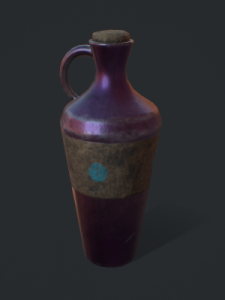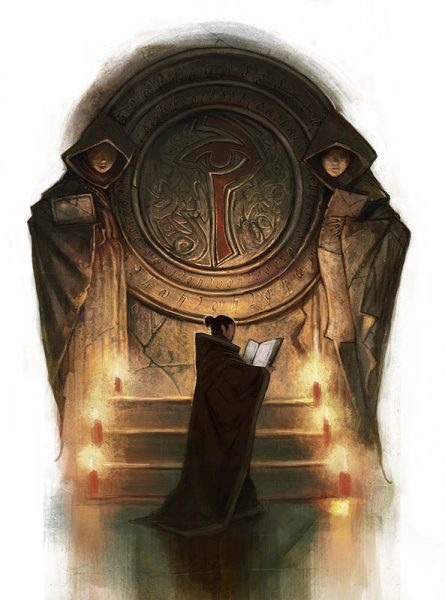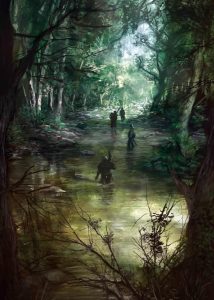The undead creatures of Planet Kaendor, with stats for Worlds Without Number.
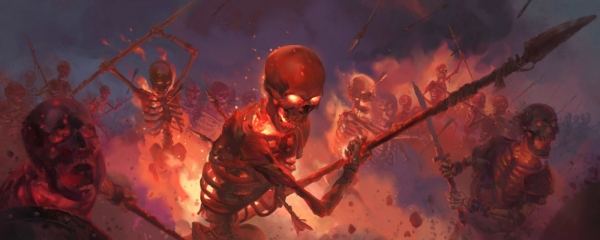 While fire has a part in the natural world, its true origin lies in the Underworld and is the animating energy of demons. Forests have adapted to survive fires and adjust their natural cycles to deal with it, and ancient mortals of ages past have learned to harness it as a powerful tool and weapon that makes civilization possible. The ability to contain the fire and to use it what sets them apart from the beasts of the Wilds. But even though fire is useful and potent, it remains a power fundamentally hostile to life. Usually fire simple kills and destroy any living things it touches, but under the influence of sorcery, the two can merge together, creating horrifying and unnatural abomination, neither living nor dead.
While fire has a part in the natural world, its true origin lies in the Underworld and is the animating energy of demons. Forests have adapted to survive fires and adjust their natural cycles to deal with it, and ancient mortals of ages past have learned to harness it as a powerful tool and weapon that makes civilization possible. The ability to contain the fire and to use it what sets them apart from the beasts of the Wilds. But even though fire is useful and potent, it remains a power fundamentally hostile to life. Usually fire simple kills and destroy any living things it touches, but under the influence of sorcery, the two can merge together, creating horrifying and unnatural abomination, neither living nor dead.
Charred Husk
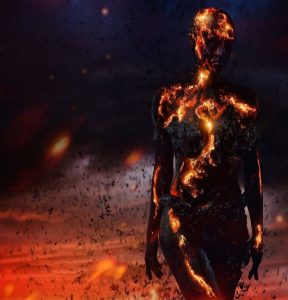 Charred Husk: 2 HD, AC 11, Atk +2 (1d8), Move 20, ML 12, Skill +0, Save 14.
Charred Husk: 2 HD, AC 11, Atk +2 (1d8), Move 20, ML 12, Skill +0, Save 14.
As undead, husks are immune to poison, disease, sleep, and unconsciousness.
Charred Husks are the most basic of undead creatures. They are corpses burned by the flames of sorcery and demons, which continue to smolder even after there’s nothing left to burn. Nothing of a living creature remains in a husk other than its charred bones and flesh. They commonly arise from creatures killed by sorcerous fire or demons, but can even be created when old corpses are consumed by the flames of sorcery. The animating energy within a husk is driven to spread itself to other living beings, and they typically attack all creatures they sense with blind ferocity.
Ghoul
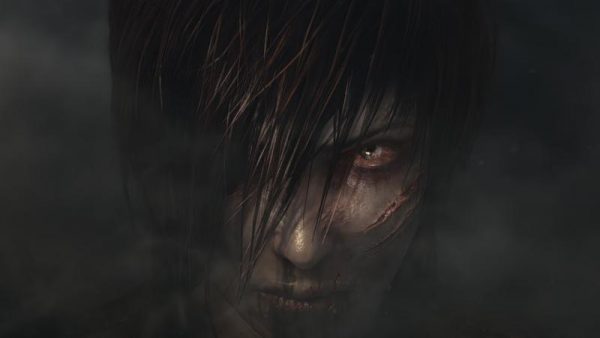 Ghoul: 3 HD, AC 13, Atk +4 (1d8), Move 30, ML 10, Skill +1, Save 14.
Ghoul: 3 HD, AC 13, Atk +4 (1d8), Move 30, ML 10, Skill +1, Save 14.
As undead, ghouls are immune to poison, disease, sleep, and unconsciousness. Unlike husks, ghouls never actually died and resemble the living in many ways. The fire consuming them manifests itself not as flames, but as a slow smoldering corruption that eats away their bodies and minds. Many ghouls are the close servants of sorcerers who have been exposed to demonic magic for many years, but they are also found frequently haunting the ruins of cities destroyed by sorcery, from breathing in the ash of buildings, trees, animals, and people consumed by demonic flames.
Ghouls can often be mistaken for living people or beasts, but they soon develop a sickly appearance, with their skin and clothing smeared with ash and soot, and eventually developing burn-like scars all over their bodies. The mental state of ghouls can vary widely, regardless of the visible corruption of their bodies. Some act like slightly unhinged but otherwise sane people, while others are ravenous beasts. Like living creatures they still have to eat, and those surviving in the ashen wastelands rarely are particular about the kinds of meat they eat and hunt people just the same as animals, or will feed on old meat, unaffected by disease or poison. But not being truly alive, ghouls are unaffected by extreme heat or cold, but they still instinctively spend the nights huddled around fires if they can find something to burn. Eventually, most ghouls are consumed by the slow fire within them over the course of many decades and end up as charred husks. Though in some cases they also transform into wights.
Wight
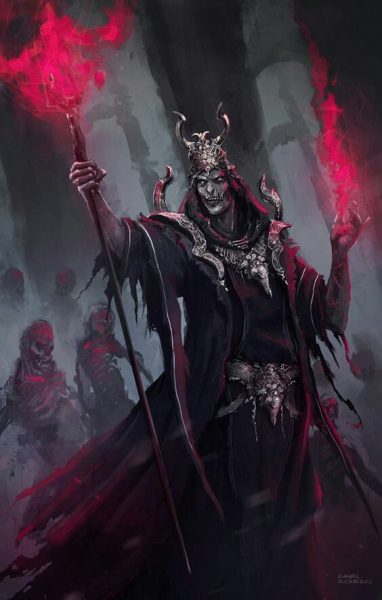 Wight: 5 HD, AC 15, Atk +4/+4 (1d8; 2/15), Move 30, ML 10, Skill +1, Save 13.
Wight: 5 HD, AC 15, Atk +4/+4 (1d8; 2/15), Move 30, ML 10, Skill +1, Save 13.
As undead, wights are immune to poison, disease, sleep, and unconsciousness. They automatically stabilize at 0 hit points and require decapitation or similar destruction of their body to be permanently killed. Living creatures hit by a wight must make a Physical saving throw or be paralyzed for 1d4+1 rounds.
All wights began their transformation into undead as ghouls, though the exact conditions that turn only some ghouls into wights and not understood even by most sorcerers. There appears a strong connection to sorcery, as ghoul sorcerers rarely end up as husks, and they are often accompanied by the wights of their most loyal guards and servants. In other cases, wights have risen from killed ghouls who have been laid to rest in tombs and ruins highly corrupted by sorcery. Most wights appear to be sane, but also very hostile to living things with no interest in any kind of talk. They almost always attack any intruders into their lairs, but usually wait for an opportunity to ambush them instead of charging blindly into a fight.
Shade
 Shade: 1 HD, AC 13, Atk +1 (1d6), Move 30, ML 12, Skill +0, Save 15.
Shade: 1 HD, AC 13, Atk +1 (1d6), Move 30, ML 12, Skill +0, Save 15.
As undead, shades are immune to poison, disease, sleep, and unconsciousness, and can only be harmed by obsidian or iron weapons. Living creatures hit by or walking through a shade take a -2 penalty to attack rolls and -1 penalty to damage rolls, shock damage, and skill checks for every hit, which remains until the end of the scene.
Shades appear as vague outlines of people made out of hazy smoke and shadows. They are not actually remnants of the dead, but rather the lingering remains of the demonic flames that consumed them. They appear somewhat related to charred husks, but the bodies that created them have been entirely reduced to ash, with nothing left for the flames to possess. Shades are just as mindless as husks, but show even less awareness of their surroundings. Shades often stand nearly motionlessly in the very spots they were created, not moving from their place for decades or centuries. Though they are created by fire, they have nothing left to burn, and instead draw in any warmth from their surroundings. Places haunted by shades are often unnaturally cold and touching them seems to drain the very life out of living creatures. Shades may attacking living creatures that are getting very close to them, though they might just as well completely ignore people walking straight through them.
Wraith
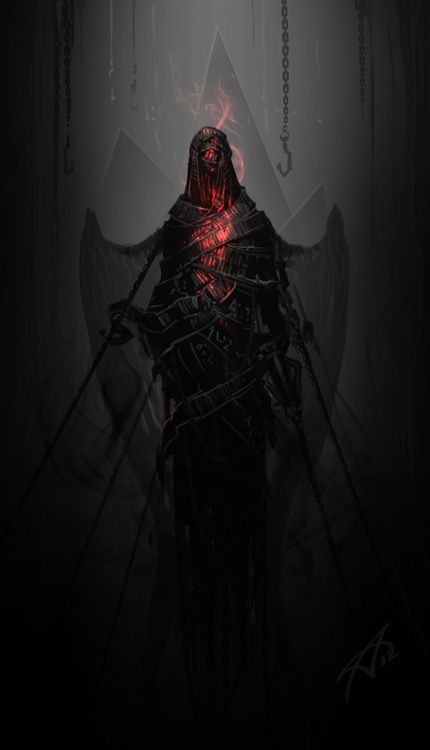 Wraith: 4 HD, AC 20, Atk +5 (1d6; 2/-), Move 30, ML 12, Skill +1, Save 13.
Wraith: 4 HD, AC 20, Atk +5 (1d6; 2/-), Move 30, ML 12, Skill +1, Save 13.
As undead, wraiths are immune to poison, disease, sleep, and unconsciousness, and can only be harmed by obsidian or iron weapons. Living creatures hit by a shade (but not when taking shock damage) take a -2 penalty to attack rolls and -1 penalty to damage rolls, shock damage, and skill checks for every hit, which remains until the end of the scene.
Wraiths appear somewhat similar to shades in that they look humanoid beings made of smoke and darkness, but their nature and demeanor is completely different. A wraith is the spirit of a highly corrupted being that has been so completely consumed by the fires of the Underworld that it burned its own bones and flesh into ash, leaving behind only a spirit of fire, smoke, and hatred. Like ghouls and wights, wraiths appear to retain much of the memories of their former lives and their intelligence, but all the trappings of a mortal life have long lost all meaning to them and the only thing driving them is a blind rage against all living things.



 Gavirs are extremely agressive and territorial, attacking everything getting close to their nests. While their beaks can’t get through the hides of large ubas or crocodiles, gavirs will often resort to attacking their eyes to drive them off. The presence of large one-eyed predators is often an idication of gavirs in the area. As often as not, such confrontations end with the gavir getting eaten, but that doesn’t appear to deter these rampaging birds. The only other creatures they tollerate are other gavirs. Fortunately, gavirs are rare in the warmer waters of the Lower River, but they are a serious threat to travellers going up the Green River.
Gavirs are extremely agressive and territorial, attacking everything getting close to their nests. While their beaks can’t get through the hides of large ubas or crocodiles, gavirs will often resort to attacking their eyes to drive them off. The presence of large one-eyed predators is often an idication of gavirs in the area. As often as not, such confrontations end with the gavir getting eaten, but that doesn’t appear to deter these rampaging birds. The only other creatures they tollerate are other gavirs. Fortunately, gavirs are rare in the warmer waters of the Lower River, but they are a serious threat to travellers going up the Green River. Their terrifying red eyes and raging demeanor has many people regard gavirs as demons, but their fury is obviously not fueled by the fires of the Underworld. Like all aquatic monsters, gavirs are spirits of the water, though such violent agression is rarely seen in any others of their kind.
Their terrifying red eyes and raging demeanor has many people regard gavirs as demons, but their fury is obviously not fueled by the fires of the Underworld. Like all aquatic monsters, gavirs are spirits of the water, though such violent agression is rarely seen in any others of their kind.


